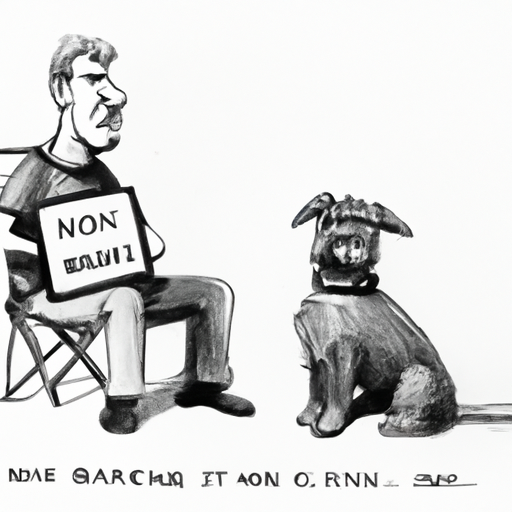As a caregiver, you have a responsibility to ensure your dog is well-behaved and happy. One common issue you may encounter is excessive barking. This can be stressful for both you and your dog, and disrupt your peace. This guide is here to help you understand why dogs bark and how you can train them to stop this behavior.
Understanding Why Dogs Bark
Dogs bark for various reasons. It’s their way of communicating with you and expressing their feelings. Some common reasons for barking include:
- Attention-seeking: Dogs often bark when they want something, such as food, play, or your company.
- Boredom or loneliness: If left alone for long periods, dogs may start barking out of boredom or loneliness.
- Fear or alarm: Dogs may bark at anything that frightens them or catches their attention.
Understanding the cause behind the barking will help you address the issue more effectively.
Training Your Dog Not to Bark
Your dog’s barking can be curbed with patience, consistency, and the right training techniques. Here are some methods you can use:
Method 1: Removing the Motivation
The most effective way to stop your dog’s barking is to remove the source of the motivation. For example, if your dog barks at people walking by the window, close the blinds or move the dog to another room.
Method 2: Ignore the Barking
If your dog barks to get your attention, ignore them until they stop. Don’t talk to them, don’t touch them, don’t even look at them. When they finally quiet, reward them with a treat or praise.
Method 3: Use a ‘Quiet’ Command
Train your dog to understand the ‘quiet’ command. When your dog starts barking, say ‘quiet’ in a calm, firm voice. When they stop barking, give them a treat or praise. Repeat until they associate the command with stopping barking.
Tools to Aid Training
There are various tools available that can assist you in training your dog. These include:
- Bark collars: These devices deter barking by emitting a harmless spray or sound when the dog barks.
- Ultrasonic devices: These emit a high-pitched sound that only dogs can hear, interrupting and deterring the barking.
- Professional dog trainers: If you’re struggling to train your dog yourself, consider hiring a professional.
| Tool | Pros | Cons |
|---|---|---|
| Bark collars | Immediate correction | Some dogs become desensitized |
| Ultrasonic devices | Non-invasive | Not effective on all dogs |
| Professional trainers | Expert help | Can be expensive |
Consistency is Key
Remember, training a dog takes time and patience. Consistency is key. Make sure all family members and visitors understand the training rules to ensure your dog isn’t receiving mixed signals.
Things to Avoid
While training your dog, avoid these common mistakes:
- Don’t yell at your dog to be quiet—it just sounds like you’re barking along with them.
- Don’t punish your dog after they’ve stopped barking. This could make them fearful and confuse them.
- Don’t ignore the underlying issue. Barking is often a symptom of a larger issue such as loneliness or fear.
Frequently Asked Questions
Q: How long will it take to train my dog not to bark?
A: Training duration can vary greatly depending on the dog and the consistency of the training. With daily training, you may see improvement within a few weeks.
Q: Is it possible to stop a dog from barking altogether?
A: It’s unrealistic and unfair to expect a dog not to bark at all. However, you can train them to reduce unnecessary barking.
Q: What should I do if my dog continues to bark excessively despite training?
A: Consider seeking help from a professional dog trainer or a behaviorist. Persistent barking can sometimes be a sign of a more serious issue.
Remember, barking is a natural behavior for dogs. Your goal should be to limit excessive barking, not eliminate it completely. With understanding, patience, and consistent training, you’ll be able to enjoy a quieter, happier home with your furry friend.



